1. World Health Organization. Obesity: Prevention and managing the global epidemic. 1998. Genova:
2. Kim TY, Suh MO. The effect of nutrition education on weight control in male workers by the community health center. J Korean Diet Assoc. 2008. 11. 14(4):351–360.
3. Yoon JS, Jeong YH, Park JJ, Oh HM. The effect of individualized nutritional education on adults having two or more symptoms of chronic degenerative disease. Korean J Community Nutr. 2002. 7(6):794–802.
4. Woo MK, Jegal SA, Kim SA. Development and Evaluation of Nutrition Education Program for Middle Aged Men at Worksite. Korean J Community Nutr. 1998. 3(2):261–272.
5. Office of Disease Prevention and Health Promotion Public Health Service. USDHHS: Worksite nutrition. 1993. 2nd.
6. No JH. Symposium for Activating Nutrition Education Program for Health Promotion of Workers. J Korean Diet Assoc. 2004. 10(1):69–76.
7. Aldana SG, Greenlaw RL, Diehl HA, Salberg A, Merrill RM, Ohmine S, Thomas C. Effects of an intensive diet and physical activity modification program on the health risks of adults. J Am Diet Assoc. 2005. 3. 105(3):371–381.

8. Block G, Block T, Wakimoto P, Block CH. Demonstration of an E-mailed worksite nutrition intervention program. Prev Chronic Dis. 2004. 1(4):A06.
9. Engbers LH, van Poppel MN, Chin A, van Mechelen W. The effects of a controlled worksite environmental intervention on determinants of dietary behavior and self-reported fruit, vegetable and fat intake. BMC Public Health. 2006. 6:253–261.

10. Tate DF, Jackvony EH, Wing RR. A randomized trial comparing human e-mail counseling, computer-automated tailored counseling, and no counseling in an Internet weight loss program. Arch Intern Med. 2006. 166(15):1620–1625.

11. Sternfeld B, Block C, Quesenberry CP Jr, Block TJ, Husson G, Norris JC, Nelson M, Block G. Improving diet and physical activity with ALIVE: a worksite randomized trial. Am J Prev Med. 2009. 36(6):475–483.
12. Son SM, Park YS, Lim WJ, Kim SB, Jeong YS. Development and Evaluation of validity of short dish frequency questionnair (DFQ) for estimation of habitual sodium intake for Korean adults. Korean J Community Nutr. 2007. 12(6):838–853.
13. Jeon ER. Effect of nutriton education and aerobic exercise program on weight control program of middle aged abdominal obese women. Korean J Hum Ecol. 2006. 9(2):65–73.
14. Van Wier MF, Ariëns GA, Dekkers JC, Hendriksen IJ, Pronk NP, Smid T, Van Mechelen W. a randomised controlled trial of a distance counselling lifestyle programme for weight control among an overweight working population. BMC Public Health. 2006. 6:140.
15. Ku SY, Kim SY, Kim EH, Park MJ, Jang YK. Effect of obesity management nutritional education program on weight control & health risk reduction in pre-menopausal women. J Community Nutr. 2003. 5:119.
16. Kim MS, Choi MS, Kim KN. Effect of nutritional education and exercise intervention on reducing and maintaining weight in obese women. Korean J Community Nutr. 2007. 12(1):80–89.
17. Yim KS. Evaluation of the effectiveness of a nutrition education program for hypertensive patients at the community level. Korean J Community Nutr. 2000. 5(4):654–661.
18. Moore TJ, Alsabeeh N, Apovian CM, Murphy MC, Coffman GA, Cullum-Dugan D, Jenkins M, Cabral H. Weight, blood pressure, and dietary benefits after 12 months of a Web-based Nutrition Education Program (DASH for health): longitudinal observational study. J Med Internet Res. 2008. 10(4):52.

19. Kim HH, Shin EK, Lee HJ, Lee NH, Chun BY, Ahn MY, Lee YK. Evaluation of the Effectiveness of a Salt Reduction Program for Employees. Korean J Nutr. 2009. 42(4):350–357.

20. Cho YY, Lee MK, Jang HC, Rha MY, Kim JY, Park YM, Sohn CM. The clinical and cost Effectiveness of medical nutrition therapy for patients with type 2 diabetes mellitus. Korean J Nutr. 2008. 41(2):147–155.
21. Woo YJ, Lee HS, Kim WY. Individual diabetes nutrition education can help management for type II diabetes. Proc Korean Nutr Soc Conf. 2006. 7:641–648.
22. Lee JS, Park JS, Lee GH, Ko YS, Kim EI. Effect of body composition, serum lipid level and resting metabolic rate by nutritional education and exercise program in middle aged women. J Korean Diet Assoc. 2008. 14(1):64–76.
23. Choi YS, Cho SH, Seo JM, Lee NH, Park WH, Song KE. Effectiveness of nutrition counseling on dietary behavior and serum levels of lipids and antioxidants in patients with cardiovascular disease. Korean J Nutr. 1999. 32(6):681–690.
24. Wang SG, Park SM. The effects of nurtition counseling on food intakes and bloodlipids in cardiac patients. Korean J Community Nutr. 2002. 7(1):92–101.
25. Diehl HA. Coronary risk reduction through intensive community-based lifestyle intervention: the Coronary Health Improvement Project (CHIP) experience. Am J Cardiol. 1998. 82(10B):83T–87T.

26. Sikand G, Kashyap ML, Yang I. Medical nutrition therapy lowers serum cholesterol and saves medication costs in men with hypercholesterolemia. J Am Diet Assoc. 1998. 98(8):889–894.

27. Lim S, Lee EJ, Koo BK, Cho SI, Park KS, Jang HC, Kim SY, Lee HK. Increasing trends of metabolic syndrome in korea-Based on Korean National Health and Nutrition examination surveys. J Korean Diabetes Assoc. 2005. 29(5):432–438.
28. Lee MS, Kang HJ, Oh HS, Paek YM, Choue RW, Park YK, Choi TI. Effects of Worksite Nutrition Counseling for Health Promotion; Twelve-Weeks of Nutrition Counseling Has Positive Effect on Metabolic Syndrome Risk Factors in Male Workers. Korean J Community Nutr. 2008. 13(1):46–61.
29. Park SY, Han JS. Effects of web-based nutrition counseling on dietary behavior and food intake of type II diabetic patients. J Korean Soc Food Sci Nutr. 2006. 35(4):430–439.










 PDF
PDF ePub
ePub Citation
Citation Print
Print


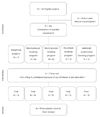

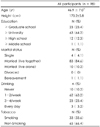
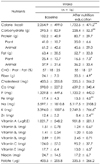
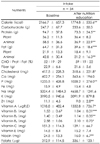
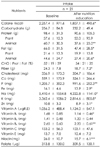
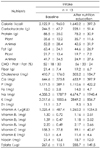
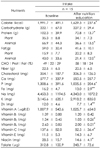
 XML Download
XML Download